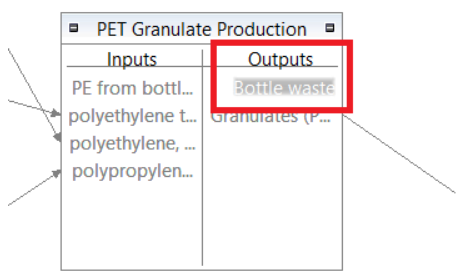Hi, this is explained in our openLCA 1.7 manual http://www.openlca.org/learning/
One of the most important new features in OpenLCA 1.7.0 is the possibility to create a waste treatment process from a waste flow which results then as an input process.
Create a waste treatment process:

Add a waste flow as an inpit in a waste treatment process:

When applying system expansion, it is possible to mark an input waste flow as an avoided waste. This means an expense in the cost column because the flow is considered as an output, as shown in grey in the model graph of the product system.


Still, it is also possible to model waste flows in the say way as it was done in the previous versions of openLCA. This means considering waste treatment as a service for the process to eliminate the product. In this case, the waste flow is a output in the waste treatment process and the waste treatment process is an input in the considered process. Attention must be paid to the positive or negative values that are insered in the amount column.

More information on this improvement in openLCA 1.7 were also announced in our blog http://www.openlca.org/we-are-happy-to-announce-the-release-of-openlca-1-7/
openLCA ≤ 1.7 – Required modelling according to the value flow direction: Previously, some cases of waste flow modelling in openLCA required a workaround. Usually, production processes are considered as of value for the receiving process. Therefore, wastes from disposal processes had to be considered as an output and returned to the production process as an input to counter the direction of material flow.
openLCA ≥ 1.7 – Allows modelling according to the actual flow direction: The introduction of a new flow type ‘waste’ allows to model waste flows directly as outputs of a production process which can be assigned as input to waste treatment processes.
Moreover, quantitative references in openLCA ≤ 1.7 had to be to the output side. This is no longer the case.
